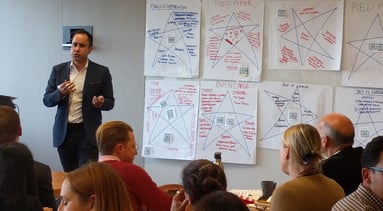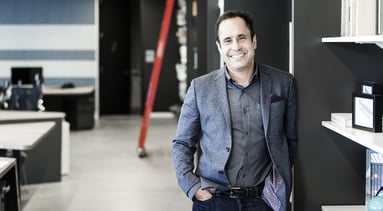.png?width=1600&height=933&name=Albert%20de%20Plazaola%20website%20news%20profile_0%20(1).png)
Albert De Plazaola, Unispace's global strategy leader, constantly challenges clients, designers and the wider industry to think differently about the relationship between business and strategy in order to shape more successful workplace outcomes.
A Boston College graduate with a master's degree from Georgetown, Albert specialises in design strategy, workplace strategy and change management.
"I look to how the business needs to work, and then determine how we can develop an architectural kit of parts that will encourage the kinds of work behaviours that will achieve organisational and business success," he explains. "I'm not a traditional designer, I'm an organisational designer – but I wanted to pursue this career path with the intent to bring design thinking to solve business problems."
Following, he shares some of the workplace trends he's seeing both in the US and across the globe, how client priorities have changed from a decade ago and the impact that technology is having on the design of workspace.
What workplace trends have you been seeing recently?
Fast, quick, flexible. Clients are looking for speed and quality – but it doesn’t need to be a work of art.
What are the highest priorities for your clients?
I think we're entering the ‘H&M’ era of workplace, at least for start-ups and tech firms. The workplace needs to be inexpensive and flexible because it might just become redundant or irrelevant in 2 or 3 years.
Do these priorities change according to industry?
I think professional services are still more concerned about space efficiency - and square feet per person - because they’re situated in high cost locations. In contrast, Silicon Valley may spend more on space if they think it will have an effect on team performance.
Have these priorities changed from a decade ago?
Yes - individual workspace is getting smaller and I think expensive non-modular workstations are a thing of the past, replaced by adjustable height tables.
How is technology impacting workplace design?
Mobility – we can work (for better or worse) anywhere. But there might be a backlash against this as we try to manage workplace balance. I think face to face interaction will continue to be a premium, and the preferred way of interacting.
Favourite international landmark: The Guggenheim, NYC
Favourite decade of design: My favourite era was the late 1950s – especially in Austria.
Favourite quote:



